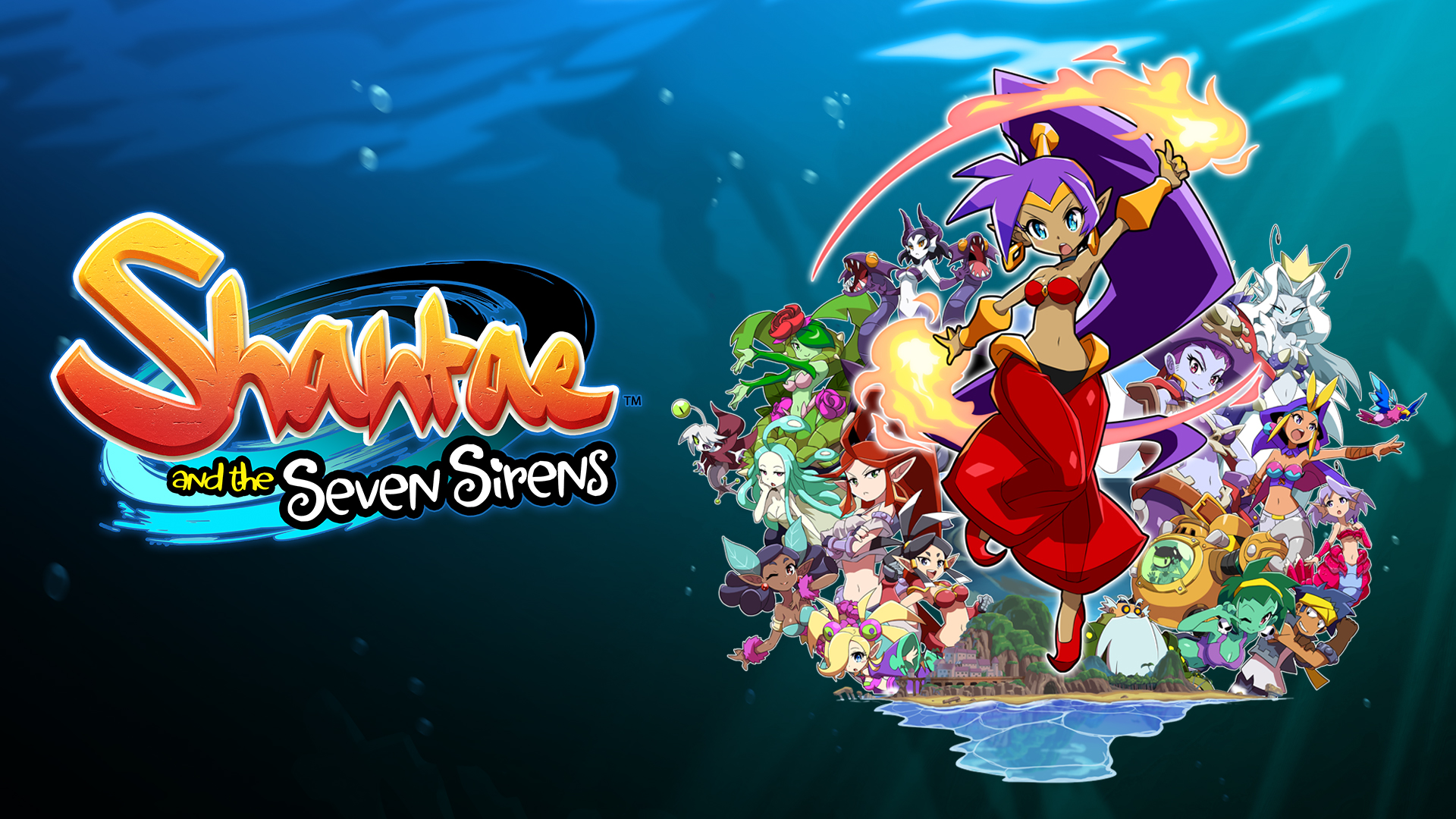[Review]: Shantae and the Seven Sirens – Nintendo Switch
Shantae and the Seven Sirens – Nintendo Switch
Developed By: WayForward
Published By: WayForward
Category: Adventure, Metroidvania
Release Date: May 28, 2020
Shantae is a franchise that has done it’s bit for the popularity of 2D gaming and built up quite a cult following, and for good reason. Series creators Matt and Erin Bozon have created beloved characters which have appeared in consistently fun experiences developed by Californian developers WayForward, with the first arriving on the Game Boy Color towards the end of its life in 2002. Since then fans have been treated to 3 well received sequels prior to this latest release: Shantae and the Seven Sirens.
Set on Paradise Island, you must defeat enemies and explore each area as it becomes accessible to open out the map in traditional metroidvania style. You need to rescue the other Half Genies who have been kidnapped by Shantae’s series nemesis Risky Boots, and upon rescuing each one you are given a Fusion ability, which you can use to access new areas to explore and reach previously inaccessible items and secrets.
There are dungeons within each area filled with enemies, simple puzzles and a boss at the end guarding a Half Genie. Boss fights provide a bit of a challenge and can be quite varied. Recurring skirmishes with Risky Boots are small scale but some bosses are massive in size and require you to put into practice what you’ve learnt up until now in a Zelda kind of way.
There are also a number of towns and villages throughout which provide shops to buy upgrades and replenishment items and locals to speak to. Squidsmiths are found in each town who will upgrade your maximum number of hearts if you have 4 Hearts Squids which are hidden through Paradise Island. In another nod to Zelda, there’s also a shooting gallery style mini game to be found in one of the towns where you can win prizes.
At various stages you can also learn Fusion Dances, with each dance providing a specific ability. The Seer dance is one of the game’s first dances you learn and is much like Metroid’s scan visor. When performed it shows secrets in the area you’re in, some of which can’t be found without performing it.
A nice little feature in Shantae is the collectible cards that you can collect when they are randomly dropped by enemies after you’ve defeated them. Each enemy you face has their own card and once you collect the right number of a card you get a stat buff or extra ability. You can only equip up to 3 different enemy cards forcing you to choose in what areas you want to customise your buffs and ability set. For the 100 percenters, Shantae provides you with a unique piece of artwork if you manage to collect all the items in the game, including enemy cards.
Environments are varied with sections where you use a Fusion ability to tunnel through earth, with enemies which mimic the movements of the ghosts in Pacman, maze-like swimming sections and Donkey Kong Country style barrel sections to name a few. In true metroidvania fashion you encounter many inaccessible locations and items for you to return to once you’ve the right ability. But the challenge may be remembering them all, as you aren’t able to lay down markers on the map which feels like a bit of a misstep and a challenge for the wrong reasons.
The art style is fantastic with a hand drawn aesthetic to characters and animated backgrounds which help bring environments to life. Animated cutscenes are a joy whenever you get treated to one, providing that warm memory of watching cartoons on a Saturday morning. Some of the enemy design pays homage to Megaman, with the iconic pronounced bulgy eyes on some enemy characters. The influence of Super Mario Bros 3 also can be seen in some of the later level design. Overall performance is good in handheld and docked, but there are times when there is some slowdown when the screen gets busy.
Voice acting is charming, adding texture to characters and sprinkled sparing throughout. Music at times plays homage to the series’ Game Boy Color roots with cheery chip tunes that hit the right notes. The sound when characters are speaking without voice acting has that nice text sound reminiscent of multiple classics from the 16-bit era. On that note there is support for the official SNES Switch controller which initially feels right playing Shantae with. But a word of warning that Fusion abilities are mapped to the ZR and ZL buttons which are tiny and not easily accessible on the SNES Switch controller.
Each element in Shantae combines to provide a fun, streamlined experience. Metroidvania experts will breeze through this barring a couple of later game challenges, with death usually occurring when you’re not paying attention to your health bar. But you should always have enough healing items (as money is overly plentiful) and when you learn the Refresh dance you can heal yourself anytime so long as you’ve enough magic. It should take just over 10 hours to reach the end, but longer is needed to scour the world to 100% the game. For those still keen to come back for more once you’ve done all that, you can start a new game in New Game Plus mode which ups the difficulty.
Shantae and the Seven Sirens is another high note in the Shantae series. Many will sail through to the end without too much challenge but the journey is fun and varied, and that’s what ultimately counts. It‘s endearing characters, colourful locales and humorous script make the visit to Paradise Island something to write home about.
4/5





Buy Shantae and the Seven Sirens
Be sure to follow WayForward









